The University Archives turns 70 on 3 May this year. To celebrate this milestone, check the blog at the end of each week for the week’s special stories from our collections.
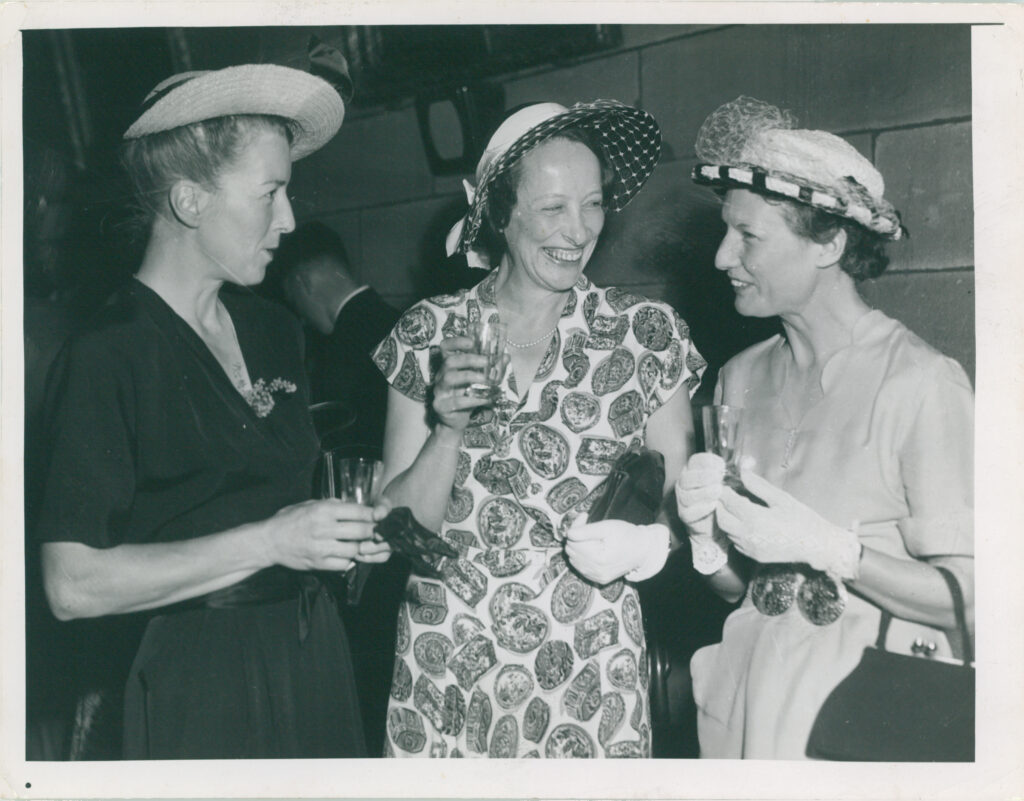
12 February 2024
The Official Photographers
The Department began life as the Department of Medical Artistry under the remit of artist and exhibitor, Mr S Woodward Smith, who was hired on a part-time basis as a “medical artist” in 1934 by the then Bosch Professor of Medicine, Professor Charles Lambie. The purpose of the Department was to prepare graphic illustrations to aid the teaching of medicine. Mr Woodward Smith determined, however, “…that photography, properly adapted, would serve this purpose more effectively and more quickly than the older graphic method of illustration and would, in fact, be more technically truthful. It would also facilitate duplication of the illustrations when necessary”.
The Department only served the Faculty of Medicine until 1950 when with improved facilities and an excellent reputation, the Department adopted its new name and offered its photographic services to all University agencies. In addition to preparing lecture slides, illustrations from original materials, recording research progress, and providing any other graphical services for teaching, the Department became responsible for all official photography around the University. The Gazette reported in May 1965, with special acknowledgement of Mr Woodward Smith who retired from the University in February of that year, that the Department’s output doubled between 1950 and 1962 and doubled again between 1962 and 1965.
Guests at Reception Given by the Vice-Chancellor Sir Stephen Roberts (10/12/1957), [REF-00076629]. University of Sydney Archives, accessed 12/02/2024, https://archives-search.sydney.edu.au/nodes/view/126776.
13 February 2024
Let There Be Light!
Plans for the electrification of the Great Hall, to replace the existing gas lighting, began in the late 1920s. In addition to this plan by Leslie Wilkinson, the University considered designs drawn by the British General Electric Co., however, Chief Electrical Engineer WH Myers had some reservations about these plans, including the concern, “That the addition of the candelabra would give rather more of an ecclesiastical appearance to the fittings than is justifiable in a University Hall”. Mr Myers, on the same day, also wrote to the Vice-Chancellor Professor RS Wallace, requesting his attendance at the Annual Dinner of the Electrical Engineering Branch of the Institution of Engineers as, “…I am hoping to be able to make a definite announcement with regard to the lighting of the Great Hall”. The Vice-Chancellor accepted the invitation and noted that, “I should like to see the problem of the lighting of the Great Hall go forward without a hitch. If any difficulties arise over the design of the lamps, would you let me know? The University is most grateful for the interest you are taking in the matter, and I do not desire that the University should appear to take up any unreasonable attitude”.
This dinner obviously went well as on 10 May 1928, The Electrical Employers’ Association of NSW wrote to the University, “…I wish to confirm, on behalf of my Association, its offer to light electrically the Great Hall of the University to the general designs and estimates prepared by Mr. Myers, Chief Electrical Engineer for Railways and Tramways; the main fittings to be of the general design outlined and approved by Professor Wilkinson…It is proposed to erect suitably ten (10) of these fittings in the main body of the Hall, with adequate arrangements for their maintenance, and to install with necessary wiring, etc., in such a way as not to interfere with, or damage, the structure of the Hall. It is proposed, prior to putting the main work in hand to conduct a trial with a full size model fitting of the design shown, in order that the appearance, both day and night, can be judged”. What is noteworthy is that when the Association heard of the University, “…suffering from lack of funds…undertook the full responsibility and cost of carrying out the work, free of charge to the University”.
Main Building – Great Hall – Electric Lighting (24/03/1927), [REF-00083863]. University of Sydney Archives, accessed 13/02/2024, https://archives-search.sydney.edu.au/nodes/view/135603.
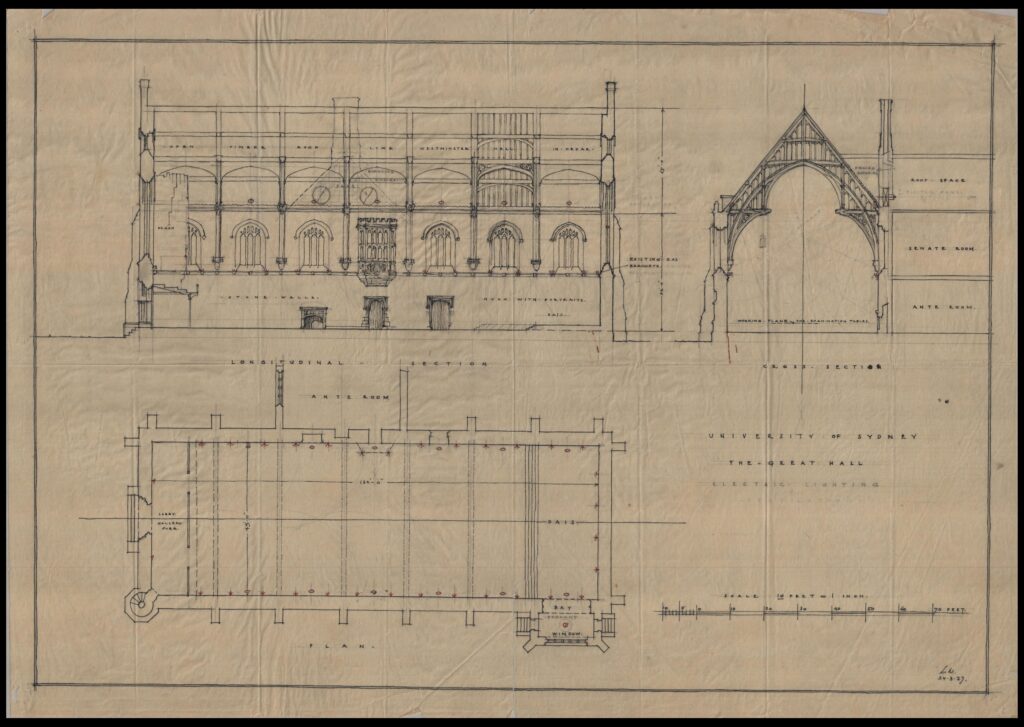
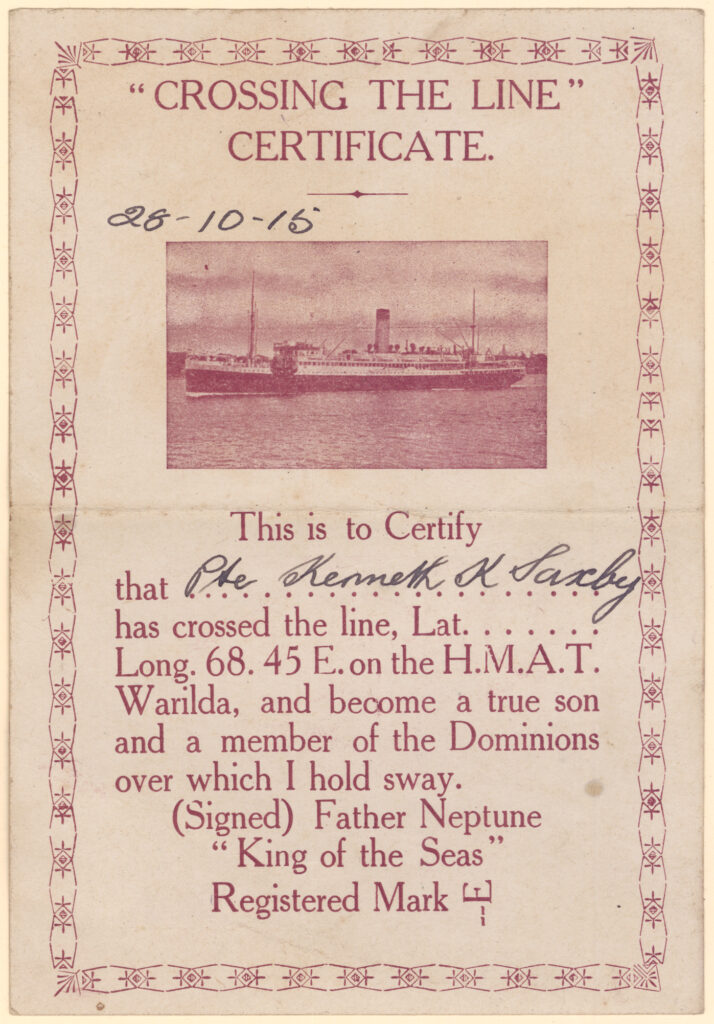
14 February 2024
You’ve Crossed the Line
On 28 October 1915, Kenneth Saxby received his Crossing the Line Certificate while onboard the HMAT Warilda, on his way to the Western Front. The line crossing ceremony celebrates a person’s first crossing of the equator and is still commemorated today within the Australian navy. Saxby documented the ceremony in his diary, writing, “Usual procedure upon crossing line. All officers went through the whole ceremony but men just ducked”.
It took nearly three weeks for the HMAT Warilda to travel from Fremantle to Suez, Egypt, which was, according to Saxby a, “Most enjoyable trip altogether”. He further noted, “Weather beautiful & calm. Sea like glass most of way. Very hot clothes mostly hat, boots short trousers, identification discs & wristlet watches. Moustache growing fever. Everybody tried it but most left off pretty quick. Me included. Flying fishes, porpoises, occasional whales…Laze nearly all day in warm sun & read or sleep or do anything you liked”.
Documents of Ken Saxby (28/10/1915 to 29/04/1917), [REF-00022193]. University of Sydney Archives, accessed 14/02/2024, https://archives-search.sydney.edu.au/nodes/view/68415.
15 February 2024
Ladies First
In 1885, Isola Florence Thompson and Mary Elizabeth Brown became the first two females to graduate from the University. Both graduating with a Bachelor of Arts, they went on to enter the teaching profession. Two years later, in 1887, while still working as a member of staff at Sydney Girls High School, Thompson became the first woman to graduate MA (Honours) from the University. This graduation booklet displaying Thompson’s name is the oldest graduation booklet held by the University Archives.
In Pioneer Women Graduates of the University of Sydney, the authors note, “One of her former students recalled Isola’s first day at the University. The male students invited the two women to choose whether they would enter the lecture room before or after the men. They opted to go in first, walking through a guard of honour of the men students. Thus began the tradition, long observed at the University, that the women always sat in the front rows”.
Conferring of Degrees/Graduation Ceremony 14 May 1887 (14/05/1887), [REF-00077292]. University of Sydney Archives, accessed 15/02/2024, https://archives-search.sydney.edu.au/nodes/view/127540.
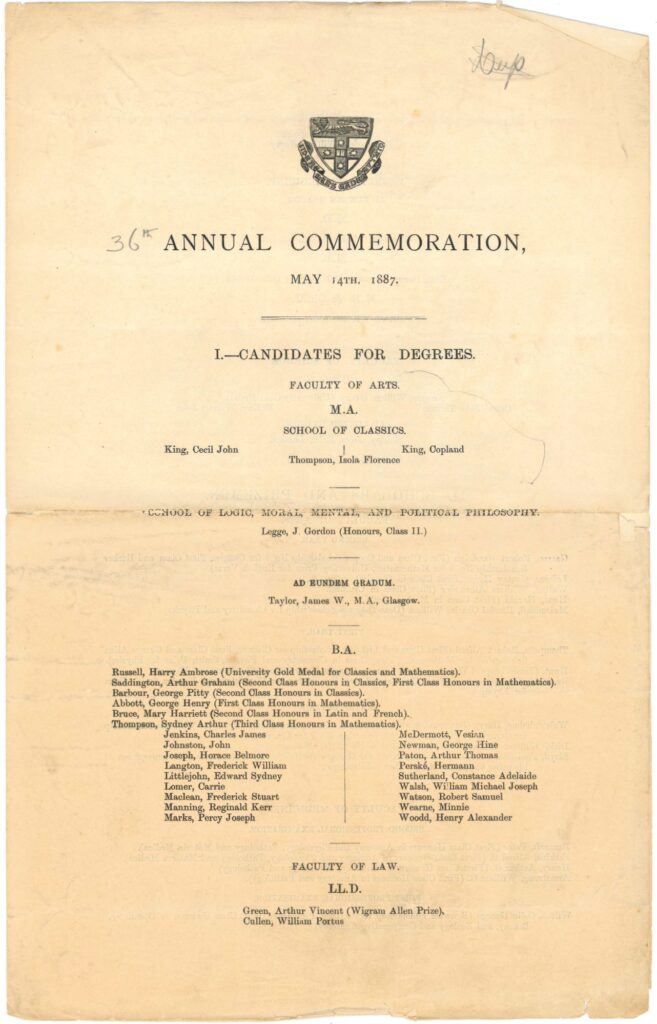
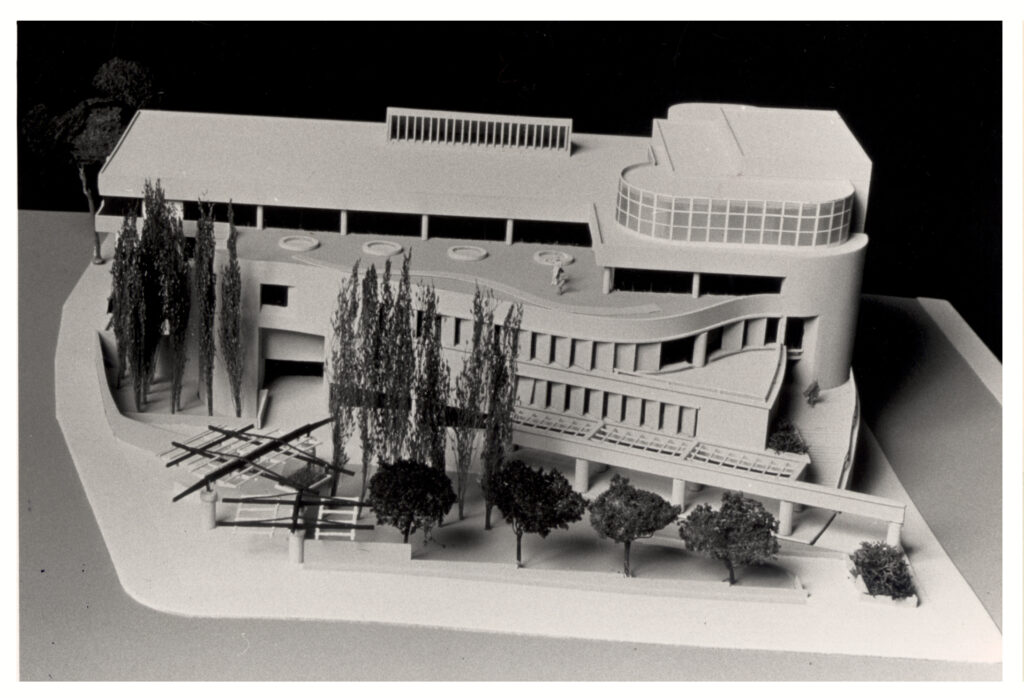
16 February 2024
Time to Foxtrot, Jive or Swing?
The Surryville Dance Hall, popular from the 1890s to the 1950s, was the first of many buildings and sites taken over by the University in the 1960s for the purposes of expansion into the Darlington area. On 8 October 1963, Senate considered the Vice-Chancellor’s report, “…that it has been agreed that Union facilities be established on the other side of City Road…It is now imperative that some type of temporary Union be established by the Unions in Darlington during 1964. The most suitable site for such a Union in relation to our planning is the Surryville Dance Hall…It is, in fact, the only building in the area which is readily and quickly adaptable. The purchase of it has been under discussion for some time…but the Vice-Chancellor had delayed making any recommendation…until finance was clearly available…The Vice-Chancellor anticipated that there would be sufficient funds…namely, £100,000”.
The Vice-Chancellor reported to Senate on 3 February 1964 that the property had been purchased and,”…a Committee comprising members of the Union and the Women’s Union had been appointed to plan and manage the new facilities. He said the Committee had recommended that these premises and the new building to be erected in the future be known as the Wentworth Building”. On 14 October 1963, an internal memorandum shows that plans for the former Surryville Dance Hall building and site were already underway with considerations for, “What goes on Site…students union – bisexual – kitchens and food preparation areas – dining areas – espresso, milk bar, games rooms and similar services…Administrative officers for Unions…Branches of banks…Staff Club for University lay staff…Bookshop…Mercery…Union Exchange. To provide facilities as at present plus super-market type of activity for convenience…Post Office…Dry Cleaning and similar facilities…Male and female hairdressing salons…Professional suites. Perhaps a dentist; a pharmacy; agency offices for insurance companies, etc…Residential accommodation for visiting V.I.P.’s. Accommodation for Students’ Representative Council, “Honi Soit” and student clubs and societies”.
While the acquisition of the Surryville Dance Hall was aided by the banks, which would ultimately take up residence within Wentworth Building (with approximately 600 square feet reserved for them), finding additional funds to prepare the building for the Union, with an anticipated opening in March 1964, proved challenging. On 13 July 1964, Secretary of the Wentworth Committee of the Unions wrote to the Assistant Principal of the University with details on the financing plans for the Wentworth Building, including membership increases for both Unions, “As evidence of determination to bring the Wentworth Building project to fruition, the two unions might agree to pay the appropriate contribution annually to the university”.
Wentworth Annexe Model (1987), [REF-00013192]. University of Sydney Archives, accessed 16/02/2024, https://archives-search.sydney.edu.au/nodes/view/33067.
Explore the blog for other posts from the University of Sydney Archives and follow us on Instagram.